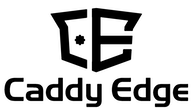Cadillac CELESTIQ - Structure and Manufacturing
There are advantages to building a car you intend to sell in vanishingly small numbers at ultra-luxury pricing.
One is you have the ability to play with manufacturing processes that you haven’t used before but which could revolutionize the cars you build for decades to come.
The Cadillac CELESTIQ contains many of these unique processes that will certainly trickle down to lesser Cadillacs if not the rest of GM’s product lines over the years. Let’s take a look at a few and discuss their benefit to the CELESTIQ in its flagship mission and also talk about how they may change the products GM makes in the future.
In addition to the Ultium chassis that serves as the basis and backbone of the new Cadillac flagship, GM is using this model to pioneer additive manufacturing (3D printing), large structural castings, and unique stamping technologies that may show up in future products after CELESTIQ.
3D Printing
CELESTIQ has 115 individual 3D printed (additive manufactured) parts. Metal 3D printing uses metal powder and lasers to sinter the powder into solid parts. This technique works well for low volume production, to build part in ways that can’t be duplicated using traditional methods, or that would be prohibitively expensive to make because of the cost of traditional molds or stamping machines. Included in the 3D printed parts list of Cadillac’s latest model are the steering wheel center. This is the largest metal part GM has printed in production. Other 3D printed parts include: window switches, grab handles, console decor and structural pieces under the vehicle’s surface.
Mega Castings
A few brands, notably Tesla, have started to experiment with replacing large numbers of underbody parts with castings. These replace assemblies made of multiple stamped steel parts welded together. The CELESTIQ includes six large sand-cast aluminum castings. Each ‘mega casting’ replaces 30 to 40 stamped parts.
The mega castings improve space efficiency with a more rigid part that is also simpler. These parts work well in CELESTIQ’s low volume. However, it is sure that GM and Cadillac are looking at the success of these parts with an eye to using similar techniques in products across the Cadillac and GM portfolio.
Flex Fabrication
Metal sheets that are folded and manipulated using techniques similar to origami make up a category Cadillac is calling ‘flex-fabrication’. This method is different enough from traditional metal stamping that Cadillac is pointing it out as one of CELESTIQ’s differentiators. This flex fabrication process is used for over 300 components.
Ultium Chassis
A lot has been said about GM’s Ultium platform. It places a flat battery pack under the floor of the passenger cabin. At each end are subframes that carry the electric powertrain as well as the suspension. The battery pack makes up a significant part of the body structure, lending CELESTIQ and any of GM’s other modern electric models additional rigidity.
Because of low volume and high prices - Cadillac is able to take chances on technologies that don’t have to hit low price points from the outset. All of these should help the company learn how to build cars in more innovative ways than they have in the past and will make the CELESTIQ a remarkable automobile and help advance GM products for a long time to come.
